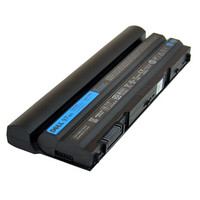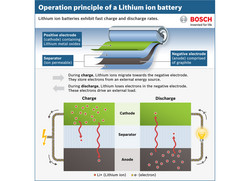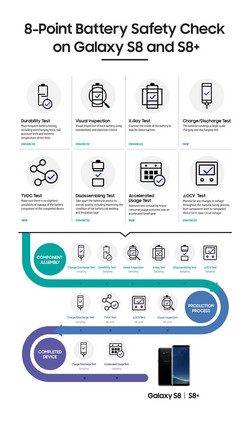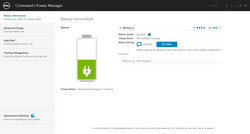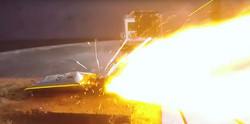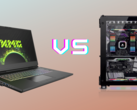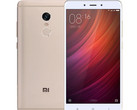Guide: Lithium-Ion Battery Safety and Care
Lithium Ion (generally abbreviated as “li-ion”) batteries power nearly all of the ever-expanding number of electronic devices we use on a daily basis. They are found in accessories such as Bluetooth headphones, smart watches, and wireless mice, and of course, our smartphones, tablets, and notebook computers. Due to their ubiquity, most of us have taken their safety for granted as we would an AA-cell battery. This is a mistake, however, as the nature of li-ion battery technology itself actually makes them significantly more dangerous. The understanding of the volatility of li-ion batteries has only entered mainstream thought in recent times mostly due to the infamous Samsung Galaxy Note 7 fires, but the fact is that it’s actually more impressive that these fires and explosions don’t happen more often than they already do. In fact, according to the US Consumer Safety Commission, since 2002, there have been 43 li-ion battery-related recalls. Let’s begin with a brief overview of the anatomy of a li-ion battery and what makes them potentially dangerous.
Anatomy of a li-ion battery
A li-ion battery is made up of one or more cells. Laptop batteries, being larger, tend to have two or more cells. Every cell in a li-ion battery works the same way to to generate power: There is a positive electrode on one side, a negative on the other, and in between, an electrolyte. When the battery is being charged, the positive electrode give up some of its lithium ions, which are attracted towards to the negative electrode. The collection of these ions is the storing of energy — energy that is released by the ions flowing in the opposite direction during discharge. The electrolyte barrier is not penetrated by the electrons in normal operation; it is essentially insulation. There is a thin slip of polypropylene inside each cell that keeps the electrodes from touching, but if that separator breaks down for any reason, the positive and negative electrodes will touch, causing a short. This short will make the cell get very hot very quickly — up to 1000 degrees Celsius — and cause a catastrophic failure. Since the electrolytes inside the cells are also flammable, the worst case scenario can be an explosion as seen with the Galaxy Note 7 and other phones.
Risk and quality control
Although the occasional highly publicized incident might hint at incompetence, manufacturers actually go to great lengths to ensure the safety of their li-ion cells as best they can. After all, the safety of their product is in the company’s best interest — as Samsung and other major companies are now well aware.
So, what happened with the Galaxy Note 7, then? According to Samsung's official investigation, there was actually more than one issue. Samsung, like most companies, used more than one supplier for their components in their phones. In this case, battery supplier A had a negative electrode that deformed and caused a short circuit. Supplier B's batteries suffered from a manufacturing defect where bumps caused by welding pierced the battery's internal barrier, again causing a short. As a result of these findings, Samsung pledged to enhance their battery testing procedure as follows:
Test Criteria
Description
Changes
Stage Level
Test Scale
Enhanced or New
Detail
Durability Test
More frequent battery testing, including overcharging tests, nail puncture tests and extreme temperature stress tests
Enhanced
Increasing Frequency
Component Level
Sampling
Visual Inspection
Visually inspect each battery under the guideline of standardized and objective criteria
Enhanced
Increased Standard
Component Level
Sampling
During Production
All
X-Ray Test
To see the inside of the battery for any abnormalities
Enhanced
By Supplier & By Samsung as well
Component Level
Sampling
Charge and Discharge Test
The batteries undergo a large-scale charging and discharging test
New
-
Completed Device Level
Sampling (Massive Number up to 100K units)
TVOC Test
To make sure there isn’t any slightest possibility of leakage of the battery component and complete device
New
-
During the Production Process
All
Disassembling Test
Disassemble the battery to assess its overall quality, including the battery tab welding and insulation tape conditions
Enhanced
By supplier & By Samsung as well
Component Level
Sampling
Accelerated Usage Test
Intensive simulating accelerated consumer usage scenarios
New
-
Completed Device Level
Sampling (Massive Number up to 100K units)
△ OCT Test
To check for any change in voltage throughout the manufacturing process from component level to complete device
Enhanced
By Supplier & By Samsung as well
Component / During Production
All
(Source: Samsung)
But it isn’t just about the battery, either. In addition to tests of the battery design itself, companies may also add hardware protection (such as brackets) inside the phone and a final layer of software protection, which involves governing the temperature of the battery during charge and discharge cycles.
In a nod to consumer concerns, Chinese manufacturer Umidigi, which recently launched a slim phone with an enormous 4000 mAh battery, based their marketing not only on the slimness of their device and its battery size, but also heralded its safety. Umidigi, among other smartphone manufacturers, subjects their batteries to a number of tests (all of which must be passed) in a specialized factory in Southern China. Firstly, batteries are tested by being compressed with 1300 newtons of pressure for five seconds. Second, they are intentionally shorted to ensure that the phone remains safe to the user despite the occurrence of a short. Thirdly, the batteries are subjected to high temperatures and humidity, up to 80 degrees Celsius. Finally, the batteries are combusted in order to ensure there won't be an actual explosion under worst case conditions.
Proper care
In theory, with proper engineering and manufacturing standards in place, the risk of an incident with a li-ion battery should be almost nil. There is some important information for consumers to be aware of, however — especially as li-ion batteries are showing up in cheaper and cheaper products in larger and larger capacities.
The first aspect of care of a li-ion battery is proper care in storing a battery that is not needed. Li-ion batteries age best when partially charged somewhere between 40 to 70 percent capacity. They should be stored in cool, dry places — but never a freezer. Your fridge is a fine place.
Secondly, there are some rules for charging your battery if you want to keep it functioning as long as possible. The major stressor for li-ion batteries is trickle charging, where the battery is fully charged but left plugged in. Li-ion batteries don’t particularly like being charged to near 100% capacity, and continually keeping one there will result in wear quickly. A general guideline is to not recharge a li-ion battery unless it is below 80 percent charge or less. The problem is that not all manufacturers allow the user to set this. Whether it is by planned obsolescence or not, to my knowledge, only Dell and Lenovo have software which allow the user to set charging thresholds for their laptops. Few other computer manufacturers (and no phone manufacturers that I am aware of) include this functionality. In general, avoid fast-charging your lithium battery-powered devices. Although quick-charge is often a selling point on products these days, know that the faster you charge a li-ion battery, the faster it will degrade (and vice versa). The same goes for temperature: try to avoid subjecting the battery (or device) to unnecessary heat while it is charging.
For more information and procedures detailing optimal care for lithium-powered batteries, please consult our charging guide.
Safety over price
Thirdly, there are some things to be aware of when it comes to what charger to use. This is actually more important now than ever due to the increased prevalence of both wall-socket and portable USB Type-C adapters for power delivery. A general rule is to always use the original charger that came with your device whenever possible, as this device has been extensively tested with that charger and optimized for it. When shopping for a third-party adapter or portable power bank, research thoroughly and buy based on quality, not price. There are hundreds of cheap no-name power banks being sold on the streets and online at low prices, advertising high capacities. Don’t be tempted to sacrifice your device or personal safety to save a few bucks.
Recap
Lithium-ion batteries are an important, delicate component in our devices. Despite their ubiquity, the volatile nature of so much power in a small package warrants respect by both manufacturers and consumers. Thus, it is critical to care for your batteries properly: avoid overcharging or storing them in hot or humid temperatures, try to keep them between charged somewhere 30 and 70 percent as much as possible, and lastly, never physically abuse them.
Don't get neurotic about keeping your smartphone or laptop's battery in perfect condition forever, however. These devices are meant to be used to improve or simplify our lives. Any battery is a consumable item which will not last forever — despite taking every precaution possible. As long as you do not abuse the batteries or subject them to the same torture-tests the OEMs do, you shouldn’t have issues.


